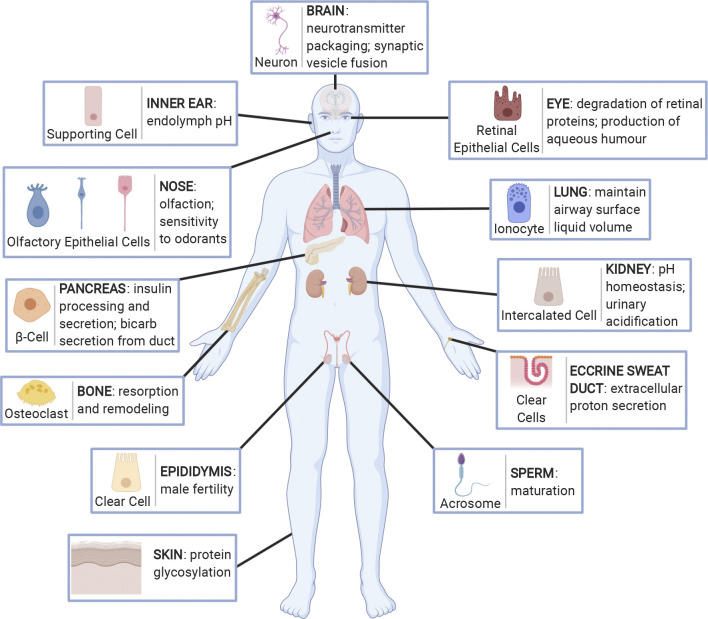Figure 2.
Organs and tissues in which V-ATPase membrane expression and proton secretion play a major role in physiological function. Specific V-ATPase holoenzymes are expressed mostly at the apical surface of specialized proton-secreting cells in several tissues throughout the body. These include the supporting cells and interdental cells in the inner ear, epithelial cells in the olfactory mucosa of the nose, β-cells in islets of Langerhans and secretory duct cells in the pancreas, osteoclasts in bone, clear cells in the epididymis, retinal pigment epithelial cells in the eye, ionocytes in the lung, kidney intercalated cells, clear cells in eccrine sweat ducts, and the acrosome of sperm cells. Furthermore, the V-ATPase is expressed ubiquitously in the endomembrane system of cells where it acts to acidify intracellular vesicles. In this capacity the V-ATPase plays particular roles in the brain, for example, where it is involved in the packaging and release of neurotransmitters, as well as soluble N-ethylmaleimide-sensitive factor attachment protein receptor (SNARE)-dependent membrane fusion of synaptic vesicles, and in the skin where it is involved in proper protein glycosylation. Created with BioRender.com.

